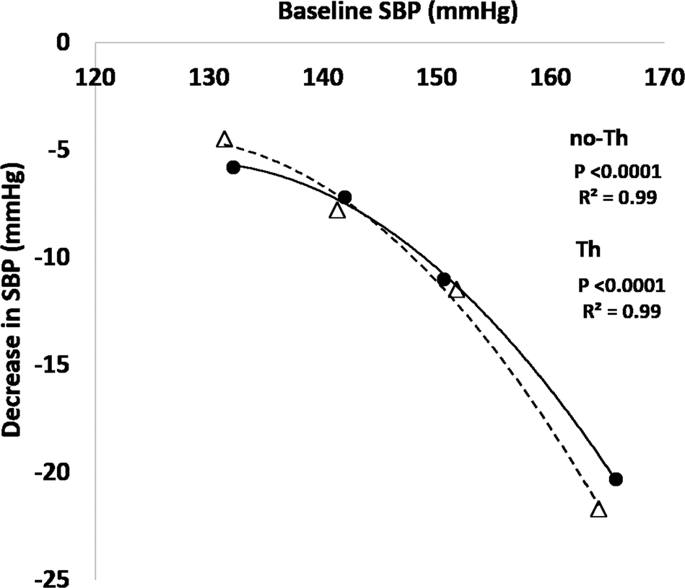Journal of Human Hypertension ( IF 2.7 ) Pub Date : 2020-03-09 , DOI: 10.1038/s41371-020-0324-6 Simona Mandini 1 , Francesco Conconi 1 , Elisa Mori 1 , Lorenzo Caruso 1 , Giovanni Grazzi 1, 2 , Gianni Mazzoni 1, 2

|
Hypertension poorly responsive to medications is defined resistant hypertension. We have previously shown that 1-year of guided walking is followed by highly significant reduction of systolic blood pressure in hypertensive subjects. Aim of this study was to assess the effect of a 1-year of guided walking on the blood pressure of sedentary hypertensive subjects including patients with resistant hypertension. Two hundred and fifty-nine sedentary subjects with systolic pressure ≥130 mmHg were subdivided in a group without blood pressure medications and in a group taking three or more antihypertensive drugs, including diuretics. Blood pressure, body weight, body mass index, waist circumference, and walking speed were determined at enrollment and after 1-year of walking, supervised by exercise physiologists. At baseline, systolic pressure was significantly higher in the subjects under therapy (144.6 ± 12.2 vs. 140.2 ± 10.7). Two hundred and three subjects (124 without and 79 with therapy) completed the program. During the 1-year program each subject walked ~220 h. After 1-year a significant decrease (P < 0.0001) of systolic pressure was observed in both groups. The decrease was significantly higher (P < 0.0001) in the subjects under therapy. The decrease of systolic pressure was directly proportional to baseline values. Diastolic blood pressure decreased significantly in both groups. In conclusion, habitual walking may lead to clinically significant reductions of blood pressure in therapy resistant hypertensive subjects.
中文翻译:

引导步行可降低久坐高血压患者的血压,包括顽固性高血压患者
对药物反应不佳的高血压被定义为顽固性高血压。我们之前已经表明,1 年的引导步行后,高血压受试者的收缩压显着降低。本研究的目的是评估为期 1 年的引导步行对久坐高血压患者(包括顽固性高血压患者)血压的影响。259 名收缩压≥130 mmHg 久坐不动的受试者被细分为未服用降压药的组和服用三种或更多降压药(包括利尿剂)的组。血压、体重、体重指数、腰围和步行速度在入组时和步行 1 年后由运动生理学家监督确定。在基线时,接受治疗的受试者的收缩压显着升高(144.6 ± 12.2 vs. 140.2 ± 10.7)。203 名受试者(124 名未接受治疗,79 名接受治疗)完成了该计划。在为期 1 年的计划中,每个受试者步行约 220 小时。1年后显着下降( 在两组中均观察到收缩压P < 0.0001)。 接受治疗的受试者的下降幅度显着更高(P < 0.0001)。收缩压的降低与基线值成正比。两组的舒张压均显着降低。总之,习惯性步行可能会导致对治疗抵抗的高血压受试者的临床血压显着降低。











































 京公网安备 11010802027423号
京公网安备 11010802027423号